The most common cause of damp walls is water. If even a tiny amount gets through, it can cause an enormous amount of damage, which is not just financially costly but also health-wise.
Moisture is entered into the house by us who live there and structural damage such as well. The cause can be a leaky pipe network or roof and thermal bridges as well. It takes patience and time to repair damp walls – as making a hasty decision could make the situation even worse.
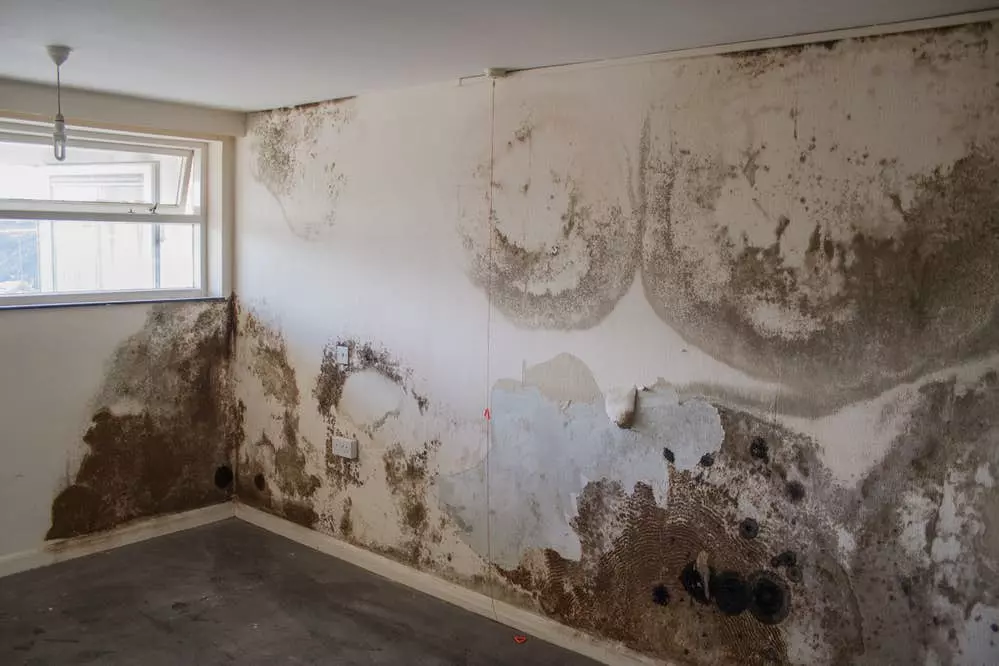
When walls are exposed to water for an extended period, mold will develop. People may suffer from headaches, fatigue, mucous membrane irritations, asthma attacks, restlessness, bronchial disorders, or allergies due to this. In damp walls, you should not use a humidifier as this will increase humidity further.
Table of Contents
What are the causes of damp walls?
A variety of factors can cause moisture, so regular checks are necessary. It is usually due to one of the following reasons:
Incorrect heating, ventilation and drying

When temperatures in a room differ too much from outside temperatures, condensation forms on the walls, and you will have damp walls in a very short time.
Tips: After cooking or showering, open your windows intermittently for five to 10 minutes instead of tilting them too long.
Technical problems:
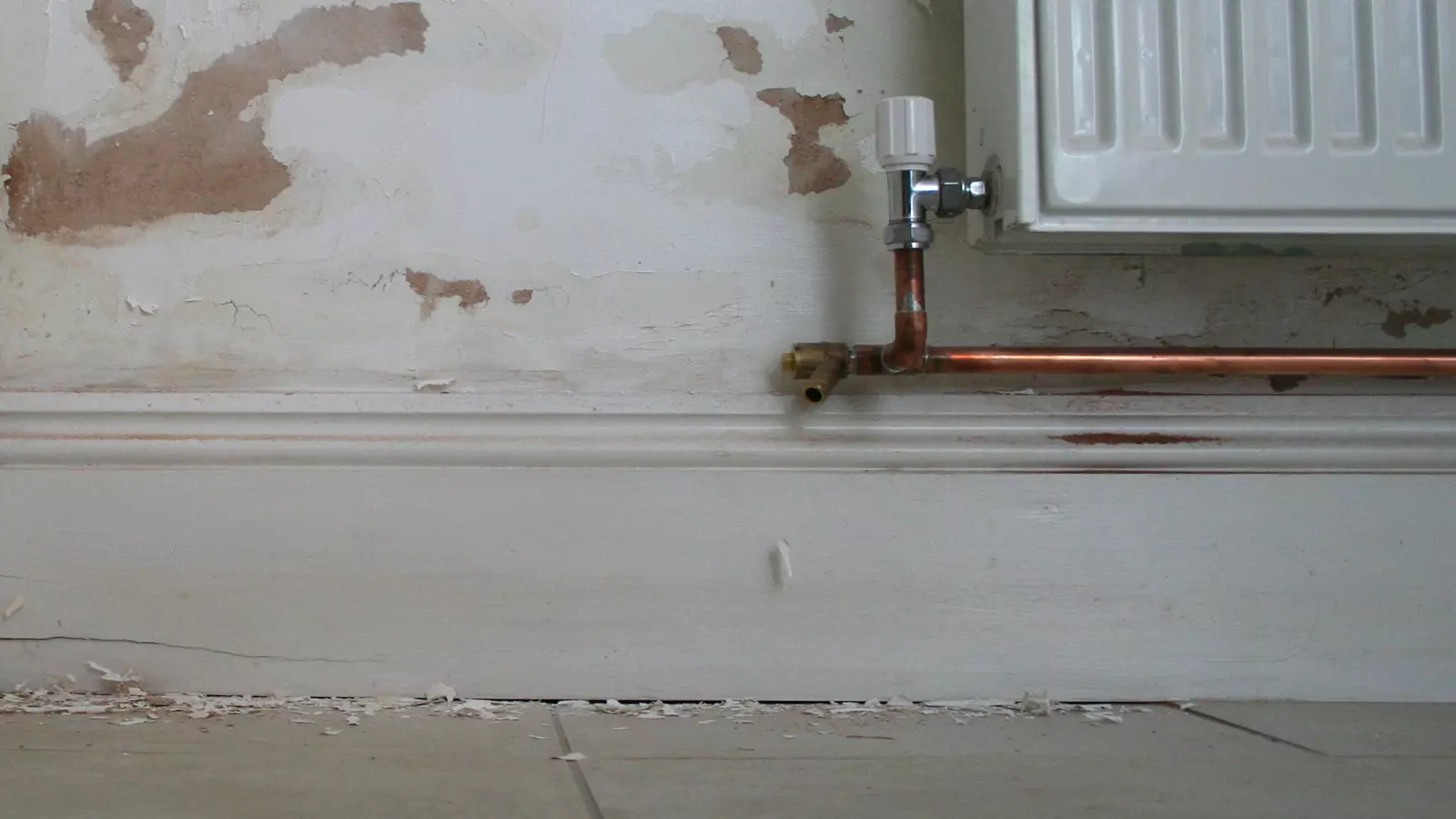
While doing household chores, there is a risk of water leakage from appliances such as washing machines, dishwashers and even air conditioners. As a result, moisture will eventually build up and find its way into the wall. Ensure that both the walls and the building materials are sufficiently dried out after events such as these so that no moisture remains in the interior of the walls.
Structural defects
- Moisture due to thermal bridges: When heat escapes more readily from a particular area in the house than in neighboring areas, this can cause moisture to build up there as well. Thermal bridges tend to appear especially at roller shutter boxes, window frames, and lintels, radiator niches, or balconies.
- The cause of this problem is incorrect insulation in different parts of the building. A poorly insulated building cools faster than a properly insulated one due to poor insulation. It causes the surface temperature to drop and moisture to settle. Therefore, mold is likely to develop.
- The balcony seal is not watertight.
- Unsealed window seals or panes on the window.
- Several cracks exist in the masonry.
- Rainwater penetrates the interior of the building through a hole in the roof or damaged roof tiles.
- A layer of moisture is rising from the ground. Normally, horizontal barriers (horizontal waterproofing) prevent this. Particularly in older buildings, this waterproofing may not be functional or even be absent altogether. A capillary effect in masonry can occur without this protective facility.
- Streams of seeping water penetrate the cellar. Vertical waterproofing (vertical barriers) prevents water from permeating the building components adjacent to the ground. Similarly, slope water has the same effect.
Note: It is important to know that the installation of horizontal waterproofing is expected to cost between 150 and 250 euros per square meter (excluding costs for an expert).
Material wear
- Showers and bathtubs leak from their seals. Over time, we use the shower or bathtub daily, which causes the seals to leak. As a result of the silicone joints being used every day for a few years, holes may begin to appear through which water then flows into the wall when showering or bathing. It only takes a small amount to cause significant damage. Due to the moisture behind the wall of the shower or bathtub, this incident happens.
- A water pipe is leaking. An example of this would be a pipe that carries fresh water or sewage.
- Burst pipes go unnoticed for longer periods, or a burst or broken pipe that was replaced at once but not properly fixed.
What are the signs of damp walls?
Even when there is just a slight suspicion, use a moisture meter to confirm the problem. With this simple device, you can determine the dampness of walls and thus confirm your doubts – or get the warning.
Throughout time, damp and wet walls develop a musty and earthy smell. The presence of permanently fogged windows or condensation trickling down those windows could also suggest damp walls. It can also come off of its own accord: whether the wallpaper comes off in pieces along the edges or simply falls off in papered strips. Also, a damp wall could cause the tile backsplash to fall off.
Depending on how much water has entered the wall over time or whether it has happened in large amounts, even the masonry itself may begin to crumble, the wall paint and plaster may peel off, leaving the bare bricks beneath. Mildew stains on walls can be white to yellow and are also an indication that they are damp. They occur as a result of the water dissolving the salts out of the mineral building materials.
If you see brownish-black fungi or even greenish-black, yellow or red mold stains on the damp walls, it is high time to call in an expert. With such damp walls, you will have a hard time coping on your own.
Find the causes
Water does not flow straight, so you often have to consider “around corners” when looking for damp walls’ causes. You may find it helpful to study the floor plan of your house. Seeing the plan try to ask yourself, are there any rooms with a wall between them or walls stacked one on top of another?
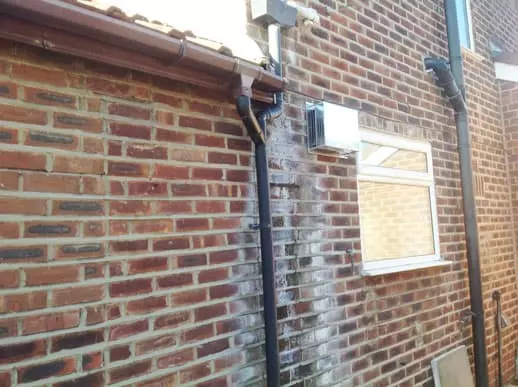
The easy way to tell is with single-story homes – with multi-story homes, the blueprint reveals the answer. When you are living in a recessed room, it’s often easy to forget something, like that the shower drain is just a few feet above the recessed wall. Perhaps there is a window above the stain on the ceiling. You might want to get out the pictures you took when you had the walls plastered and study them carefully: Which pipe runs in which wall?
Contact a Professional
In the case of damp walls in rented properties, you must notify the landlord immediately and discuss your next steps with him. As a homeowner, if you have no idea where the water is coming from, you can contact a service provider. If you are a do-it-yourselfer, you can fix the situation, i.e., try to find the source of the water leakage, fix the balcony, and seal the joints with silicone. Please do not belong to fixing damp walls or hiring a responsible technician to do the job for you. Also, consider this when working on major projects like roof renovations or replacing a pipe. The leak requires professional sealing in this instance.
Dry up the wall: Soaking the moisture
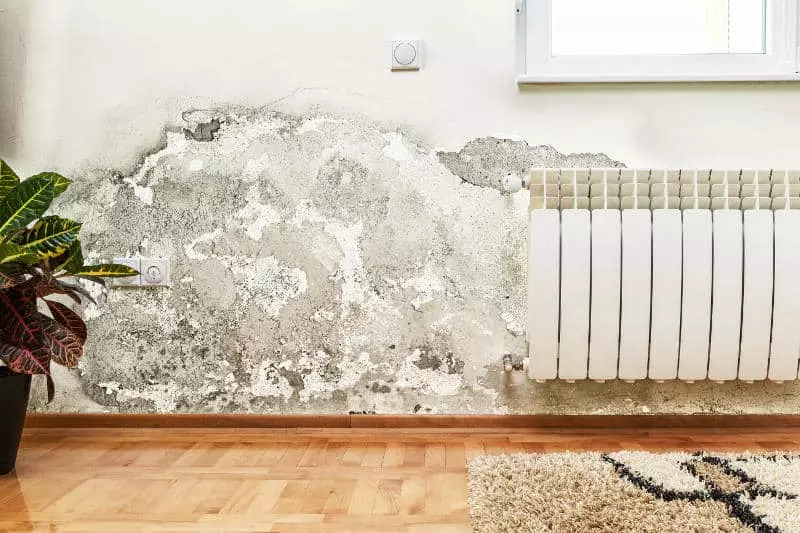
Here, an expert is needed. If a layperson keeps the drying process too early, or if they do not do it properly, they can contribute to the spread of mold. In the worst-case scenario, masonry could be too badly affected by the moisture and requires individual bricks or even entire sections to be replaced. To reduce the job cost, talk to your expert after the damage analysis about what parts of the work you could perform yourself. In the affected room, install a dehumidifier to dehumidify the air after completion.
Drying damp walls: Try the Horizontal method
Among various horizontal methods, the following are feasible to protect against rising ground moisture that causes dampness in the masonry (capillary action):
A steel plate shaped like a wedge is driven into a joint so that the mortar is displaced downwards and upwards when the expert drives the steel plate into the joint with a lot of force so that the joint is continuous. In the lack of a joint, the masonry can be cut open at the appropriate point. Usually, older houses are renovated in this way.
Drilling method:
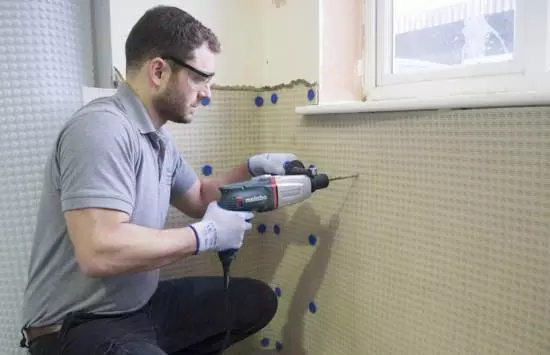
In the fight against damp walls, this seems to be the easiest method for someone who knows how to perform the job. (Do-it-yourselfers)
A very good drill bit is used to drill the holes filled with chemical sealants. A storage vessel fixed in the drilled holes is used to inject the agent into the wall.
Pressure injection:
drilling a lot of holes into the damp wall is the first step to To inject pressure into the damp wall. Then the chemical sealant is released into the wall using high-pressure machines.
Infrared panels:
Infrared panels are another method for drying damp walls, as they are placed in front of the damp masonry and bring moisture to the wall’s surface where the heat dries it. In addition to being used as an additional measure, the panels can be used after the previous drying process has been completed.
Electrophysical method:
The idea is to use an electric current to dispose of water from the damp masonry using a box attached to the damp wall. Masonry is generally dried using a permanent voltage of 60 volts is generally used.
Drying damp walls: vertical method
You can use it to protect against pressing moisture these vertical methods.
Exterior waterproofing:
Remove any soil from around the infrastructure, usually around damaged joints or old plaster. Afterward, sealing mud, primer, and a thick coat of bitumen are applied.
Tip: To prevent damage to the waterproofing, use dimpled membranes and filter fleeces when closing the excavation.
Interior waterproofing:
A wall that has already become damp due to the ground moisture needs treatment from inside. Then, waterproof sealants are usually applied, and slurries are injected after draining.
When it is still moist, repair it with the correct plaster.
Good to know: When waterproofing vertically, it is essential to let the structure dry completely before applying sealant.
Final words
A damp wall is a serious issue that should be taken care of quickly to avoid any further damage. The most common cause of moisture problems in the house is simply leaking from pipes, but there can also be structural issues that allow water into the home. Having one leaky pipe could easily lead to mold and other damaging health effects for you or your family members.
If you have noticed an increase in humidity levels in your home recently, it’s important to get someone with experience like us out as soon as possible so we can identify and fix the problem before it becomes unmanageable (and costly). If you liked the article on Damp Wall Cause and Solution, please comment below to inspire us and also share to spread knowledge and love.